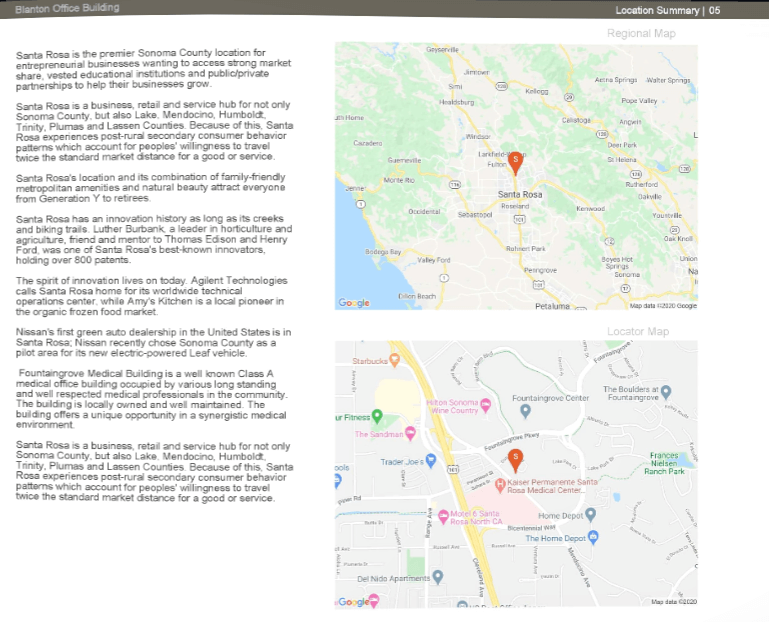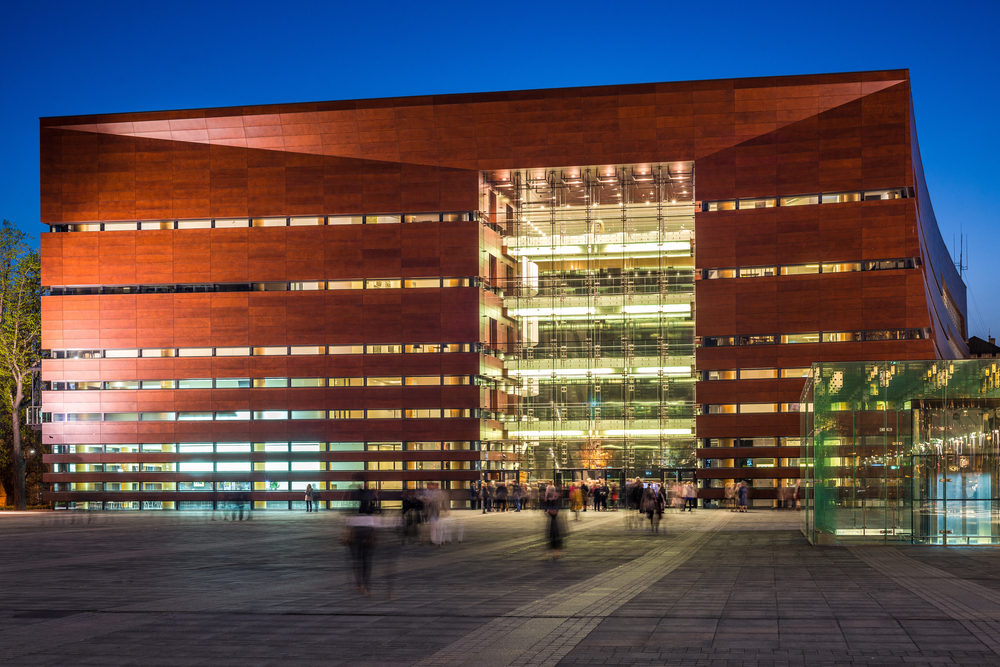So, you’ve developed a commercial property and you’re ready to capitalize on all your hard work?
Before investors or tenants hand over their hard earned cash, you’ve still got to do a little marketing if you want to convince them you’ve got the right property for their business.
In order to do that, you’ll need to gather your marketing assets, which include property listings, an immersive website, and even professional looking real estate flyers.
Though you may think in this digital world that real estate flyers are unnecessary, think again. Though you may not want to stand on the corner and hand out pieces of paper to potential investors or tenants, one thing you will want to do is create digital real estate flyers that are easily shared across the web and given out to people in person.
That’s why today we’re going to convince you that real estate flyers are a necessary marketing component for any property owner looking to sell or lease. Plus, we’re going to give you some surefire ways to ensure your commercial real estate flyers attract the right people and convert.
Why You Should Use Commercial Real Estate Flyers in 2020
Advanced web technology has irreversibly changed how we market everything, including commercial real estate. Yet, there is still a spot for more traditional marketing materials, such as flyers, brochures, and offer memorandums. In fact, this type of marketing still exists, just with varied forms so business owners can reach wider audiences than ever before.
In the commercial real estate world, properties exchange hands for millions and sometimes billions of dollars, and yet, interactions are still mostly conducted face to face. We’d even go so far as to say there’s a long time before we learn to entrust life-changing transactions consisting of lots of money to the computer.
Handing somebody a physical flyer promoting your property gives you another touch point to use and influence the buyer’s decision. In fact, a flyer with the property’s core information and benefits can complement a verbal presentation and give your potential investor something to remind them later about the property long after they’ve walked away.
Think about it.
Our fingers remember the distinct feeling of cheap glossy flyers we’re handed from fast food restaurants. Handing somebody a piece of premium paper that feels solid and expensive to the touch is going to leave an impression – just like a firm hand shake does.
This type of marketing, though often pushed aside and replaced with digital means of advertising, gives you an edge over the competition.
Now that you know you’re going to need a commercial real estate flyer for your piece of real estate, let’s take a look at how you can create highly attractive and converting flyers for your properties.
1. Create Integrated Experiences
Any decent marketer will tell you that marketing today is all about offering an integrated experience, no matter what means you take to market your brand. Your marketing efforts must interact seamlessly with what you’re offering and take potential investors on a journey that leads to a transaction. If not, you’ll never generate a sale or have a signed lease agreement in hand.
Because of this, it’s best to think of your real estate marketing materials as extensions of you, and insist that they come in all forms – print, online, and in-person interactions.
This process starts with handing someone a beautifully designed and informative flyer. From there, the conversation moves online, where a detailed website neatly presents all the compelling reasons to pick up the phone and request a meeting.
This then takes us to our next point.
2. Consistently Represent Your Brand
Every flyer, brochure, business card, email, or social media post is a representation of your business.
There are a million and one downloadable templates for any type of commercial real estate property you have. There are also many design apps that allow you to customize and modify premade layouts for just about everything you need.
It’s important to consider how the design of your real estate flyers and other marketing materials correlate with your brand and the message you’re trying to get across. This is true even for property owners that have one piece of real estate they want to sell or lease.
If you’re going to leave a lasting impression on potential investors, you need your marketing materials to be consistent with one another and stay true to the values your brand is known for.
Of course, a commercial real estate flyer is all about the property that’s available. However, even if you can’t land the transaction right now, nailing down the visual presentation will entice potential investors to come back around and take another look. And eventually, you’ll land a sale.
3. Follow the Design Rules for Commercial Real Estate Flyers
In order to push ahead of the competition, you need to follow a handful of design principles when creating your commercial real estate flyers. And the best part is, whether you plan to make these marketing materials available for in-person interactions, or as an immersive experience on your website, the same best practices will come into play.
Layout
If you’re picking a ready-made template, choose a layout that has all the core elements of a commercial real estate flyer:
- Building name and address
- Square footage and price
- Photograph
- Map
- Text area / Featured benefits / Highlights section
- Contact information, company name, and logo
From there on, different types of real estate will be marketed differently.
For example, an office space flyer will inform tenants about nearby transportation options, as well as nearby amenities such as parking spaces, cafes, restaurants, bars, gyms, and anything else people like to do after a hard day’s work.
On the other hand, an industrial complex flyer will emphasise property features such as 3-phase power, climate controlled warehouses, railway infrastructure, and proximity to the highway network.
Lastly, a property owner with a piece of retail space will want to promote to prospective business owners the amount of foot traffic going through the premises, the population of the nearby areas, and the amount of money typical customers spend when they frequent the area.
In the end, just make sure the layout of your commercial real estate flyer speaks to the property you’re advertising.
Images
Nothing turns off potential buyers or tenants like a bad quality photo that takes up half of your real estate flyer.
One of the best marketing investments you can make is having your property professionally photographed.
Premium quality photographs can mean the difference between someone finalizing a purchase and going elsewhere with their business. You want to make sure to highlight your property’s best angles and entice people to come check it out in person.
Typography and Colors
Ideally, you want to match the fonts and colors of your flyers, brochures, and website.
In doing so, vsitors will have an easier time recognizing your consistent branding and style and recalling previous information they read or emotions they felt about your brand.
If you can’t match the style exactly, focus on making the flyer easy to scan and effortless to read. Use colors to outline or contrast other design elements, keeping the reader’s eye pinned to the flyer.
Content
All the fancy presentation of a real estate flyer is pointless if you fail to create solid content for it. Sure, a commercial real estate flyer is mostly a visual piece of marketing material. However, this means the written text you do include on the flyer is even that more important.
The key to winning a potential buyer or tenant over is being able to tell them in 5 lines or less why they should buy or lease from you.
Remember, it’s all about selling or leasing out the property you have available. It’s not there to advertise your business, so don’t emphasize your brand too much. Instead, use demographic data, market statistics, and projections to present a compelling business case about the property and make people feel that if they don’t jump in and buy or lease now, they’ll regret this missed opportunity later.
Of course, don’t forget to put your name, contact information, logo, and website on the flyer, so those interested can look you up later.
If you want to take it a step further, you can always add a QR code that leads people from your flyer directly to your website, where all the compelling benefits you listed will be matched with even more detailed information about the property and your business.
Again, if you match the design of your flyer and website, you can offer a seamless transition between both mediums, thus giving the reader reassurance they’re looking at the same property and company.
4. Strive to Hire a Qualified Marketer
Of course, any advice provided in this article cannot compensate for the years of experience and practical knowledge of a professional marketer.
The person designing your marketing material should not only have vast understanding of the property and your industry, but also the ability to convey the values of your project to the target buyers or tenants you want to attract.
Not able to hire a professional marketer quite yet? Don’t worry. At CREOP, we understand the importance of marketing properties to interested buyers and tenants. At the same time, we know that property owners don’t necessarily have the time, money, or skills needed to create “professional” real estate flyers.
That’s why we strive to provide a user-friendly online platform that helps any property owner, regardless of marketing or design skills, to create stand out real estate flyers, offer memorandums, and other advertisement materials.
5. Study Your Competition
If the right person is already responsible for marketing your properties, they’ll understand the need to research the competition and study their designs in detail.
After all, your potential investors will likely meet some of these other developers (who are your competition) and will be handed their real estate flyers in addition to yours.
Of course, the goal is to copy (or worse, plagiarize) your competition’s marketing materials. Rather, the goal is to study what they’re doing that’s working, tweak what isn’t working, and make your materials even better than theirs.
Doing this will leave lasting impressions on all interested buyers or tenants, no matter how many other property owners they consult.
Wrapping Up
Your commercial real estate flyer does not live in isolation; and it never should.
Just like every other marketing tool, a real estate flyer will represent your business, attract the right target audience, and drive sales. If you take the time to create informative, original, and highly attractive real estate flyers representing the properties you have available, you’re sure to get more business in no time.
This is especially true if you use a cloud-based software like CREOP. Providing property owners the tools to design and manage a property marketing campaign in no time, CREOP is as effective as hiring a professional marketing – without the hefty price.
So, get in touch with us today and see how we can help you create real estate flyers, offer memorandums, proposals, and full-fledged marketing packages to advertise your available property for the highest sales prices or rent rates possible.








